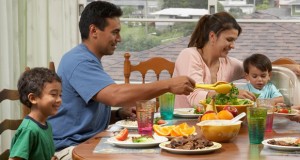Halting Maui’s Childhood Obesity Problem
By Laura Greene
Last year, US President Barack Obama declared September to be National Childhood Obesity Awareness Month, in an effort to try and tackle the nation’s growing problem.
Obesity levels are a big concern for children in Maui County, with 28.5% of 10-17 year-olds now considered overweight or obese.
Obesity has sky-rocketed across the United States to include a third of all children, a figure that has tripled since the 1970s.
“We must do more to halt and reverse this epidemic, as obesity can lead to severe and chronic health problems during childhood, adolescence and adulthood, including heart disease, diabetes, cancer, and asthma,” Obama said in September 2010.
“There are concrete steps we can take right away as concerned parents, caregivers, educators, loved ones, and a nation to ensure that our children are able to live full and active lives.
“During National Childhood Obesity Awareness Month, I urge all Americans to take action to meet our national goal of solving the problem of childhood obesity within a generation.”
According to the National Centers for Disease Control and Prevention (CDC), 22.7% of adults in Hawaii are also obese and the annual medical cost to the state is estimated to be $290 million.
The main causes for childhood obesity are a poor diet, lack of exercise, too many sugary drinks and too much sedentary time.
Living on Maui, with a range of outdoor activities and healthy foods, it can be easy to tackle your child’s obesity and help their future health.
What you can do:
1. Encourage healthy eating
* In an average plate lunch the calorific value and fat content is very high. Chicken katsu, two scoops of white rice and mac salad weighs in at 1360 calories and a whopping 68 grams of fat. If your child does eat the occasional plate lunch, try substituting white rice for brown rice, mac salad for salad leaves and red or deep-fried meats for grilled chicken or fish. Still yummy but far healthier.
* Avoid fast food and try to incorporate plenty of vegetables, fruits and whole grains into your family’s diet instead. With Maui’s wealth of bananas, avocados, papayas, mangoes, upcountry greens and more, this doesn’t have to be expensive and is right on our doorstep.
*Reduce portion sizes and cook with lean meats or fish. Fresh fish is in abundance on Maui and low fat meats like Maui Cattle Company’s grass-fed lean beef is a good choice as a heart-healthy meat.
2. Drink Wisely
*Try not to drink sugary sodas, or limit your child’s intake. Just one can of Coca-Cola has 40 grams of sugar and 150 calories.
*Encourage your family to drink lots of water.
3. Get active
* Maui is a great place to be active and just 30 minutes of exercise a day is a great place to start reducing childhood obesity. Surfing, skateboarding, playing school sports, paddling, swimming or riding a bike are all easy to do here. Exercise can not only help with weight, but can help to strengthen bones, decrease blood pressure, increase self-esteem and reduce stress.
* Reduce sedentary time and limit the amount of time your children spend watching television or playing computer games to no more than two hours a day.
4. See your local physician.
*If you are worried about your child’s weight or obesity, visit your doctor for professional advice.










